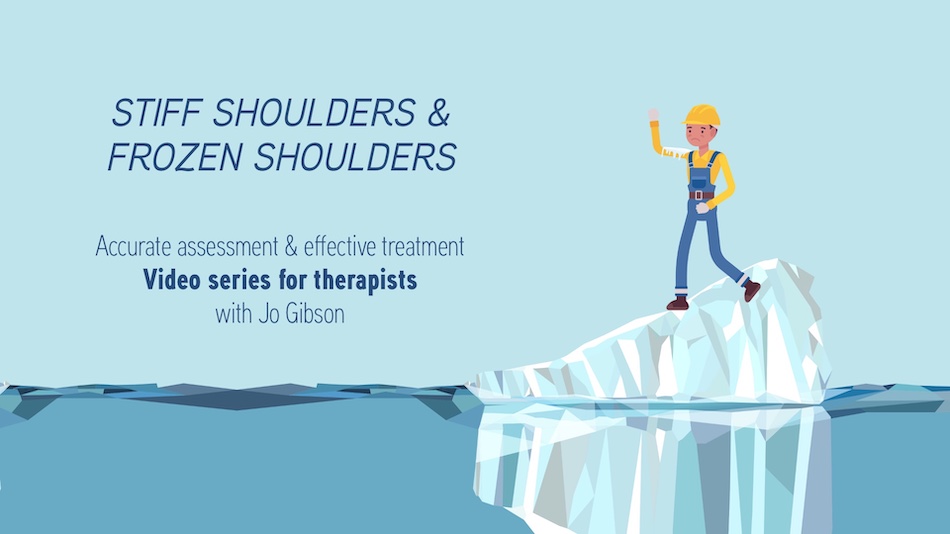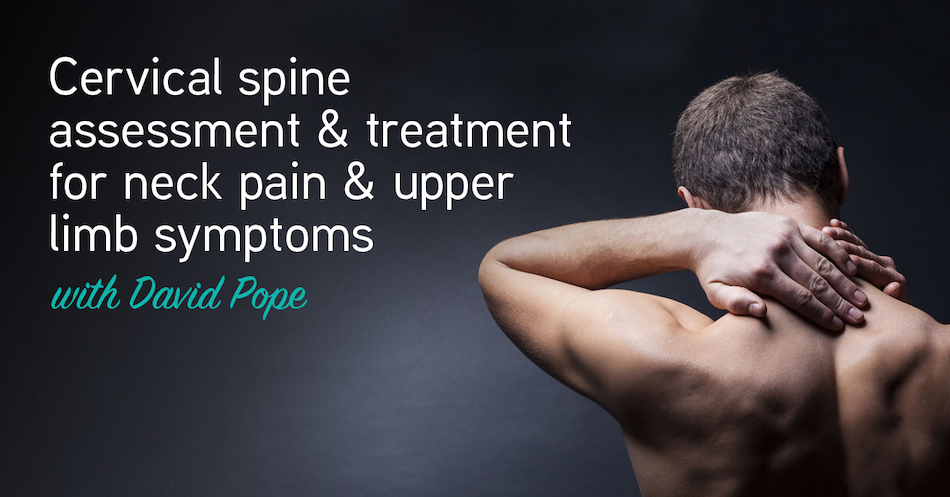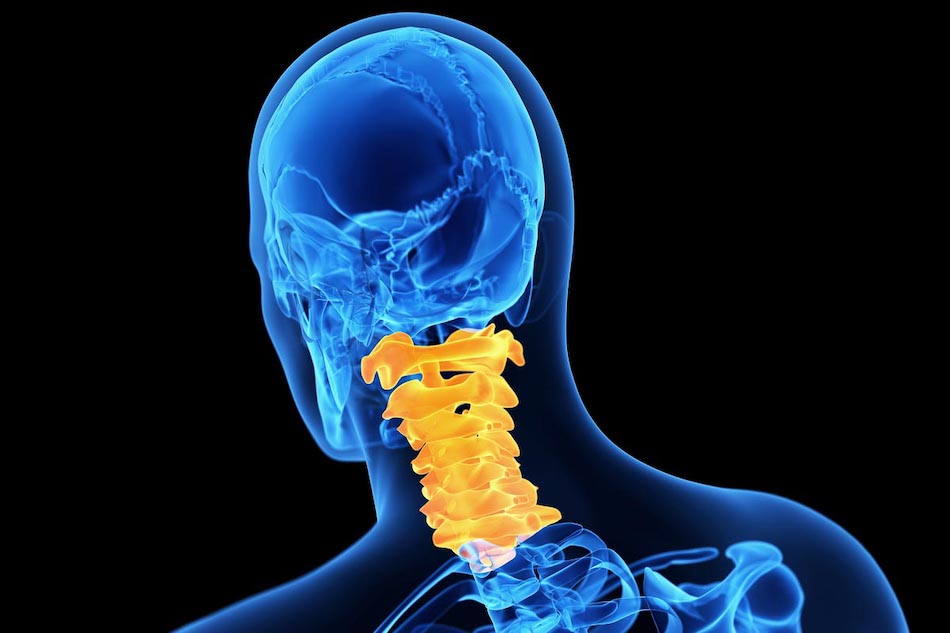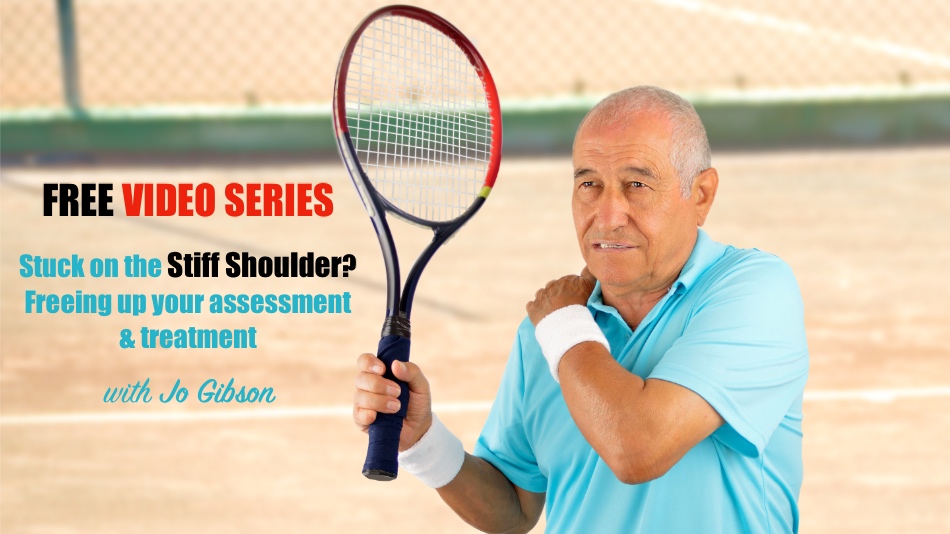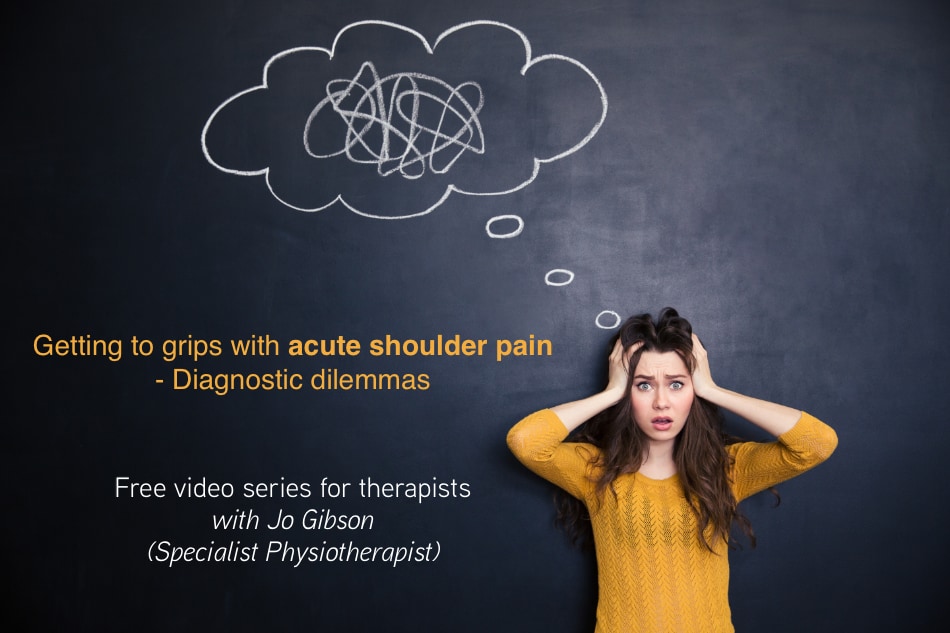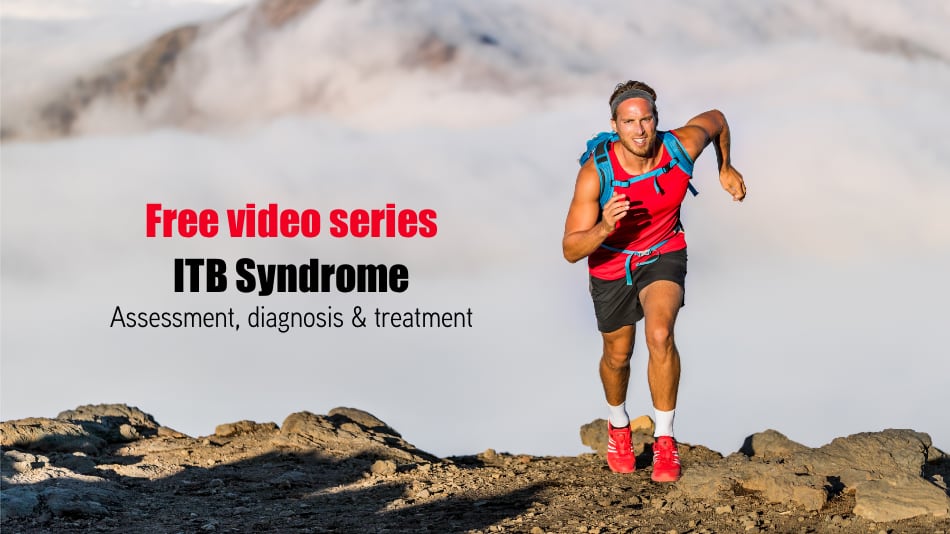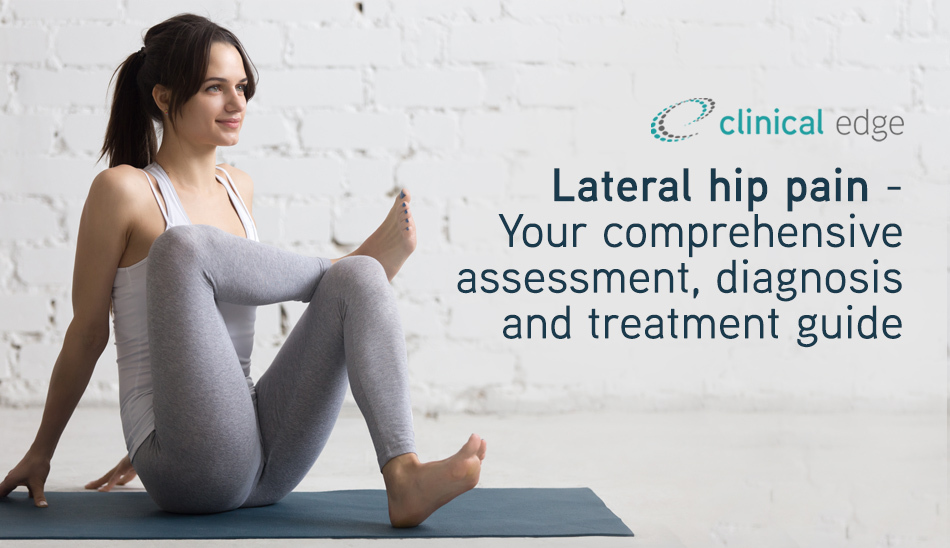Wed, 14 July 2021
Is subscapularis the forgotten part of the rotator cuff? Do we ever need to target it individually? If we do what are the best options for exercises? Find out which patients with torn or painful shoulders benefit from targeted subscapularis rehab in this episode of the Physio Edge Shoulder success podcast with Jo Gibson. You’ll discover: Rotator cuff & subscapularis anatomy & function.
Subscapularis pain & injury
Objective assessment
Targeted subscapularis rehabilitation
Subscapularis rehab in other patients
Improve your rehab of painful and torn shoulders now with this podcast. Get free access to the free video series “Frozen shoulder assessment & treatment” with Jo Gibson at clinicaledge.co/frozenshoulder Improve your assessment and treatment of shoulder pain with the Shoulder: Steps to Success online course with Jo Gibson, now available for enrolment at clinicaledge.co/shouldersuccess Links associated with this episode:
Direct download: 123._Subscapularis_-_the_forgotten_part_of_the_rotator_cuff_Physio_Edge_Shoulder_success_podcast_with_Jo_Gibson.mp3
Category:general -- posted at: 12:39pm AEST |
Fri, 2 July 2021
Are vaccinations associated with shoulder pain? Shoulder injury related to vaccine administration (SIRVA) has received a lot of attention on social media as vaccination levels have increased. If your patient has shoulder pain after a vaccine, what does this mean for treatment? Also in this podcast, how can you identify non-musculoskeletal causes of shoulder pain related to NSAID use or viscera? Find out in this podcast with Jo Gibson (Clinical Physiotherapy Specialist). The handout for this podcast is an article referenced in the podcast. There is no additional transcript or handout available. Free video series “Frozen shoulder assessment & treatment” with Jo Gibson at clinicaledge.co/frozenshoulder Improve your shoulder assessment & treatment with the Shoulder: Steps to Success online course with Jo Gibson at clinicaledge.co/shoulder Links associated with this episode:
Articles associated with this episode:
Direct download: 122._Shoulder_pain_after_vaccine__NSAIDS_-_Physio_Edge_Shoulder_success_podcast_with_Jo_Gibson.mp3
Category:general -- posted at: 2:46pm AEST |
Mon, 26 April 2021
How can you accurately assess neck pain patients and choose the most effective treatment to help resolve their pain and prevent recurrence? Find out in part 1 of this two part podcast series with Emeritus Professor Gwendolen Jull, and explore:
Download this podcast now to improve your assessment and treatment of neck pain. The next podcast with Prof Gwen Jull, available soon, will build on the knowledge you gain from part 1, and provide you with additional neck pain treatment strategies. CLICK HERE to get access to Cervical radiculopathy assessment & treatment case study Links associated with this episode:
Direct download: 121._Neck_pain_assessment_clinical_reasoning__rehab._Physio_Edge_podcast_with_Prof_Gwendolen_Jull.mp3
Category:general -- posted at: 11:56am AEST |
Fri, 16 April 2021
Pec minor cops the blame for shoulder pain, scapular dyskinesia and all sorts of upper limb pain and “dysfunction”. Is pec minor shortness or “tightness” really responsible for shoulder pain? In this podcast with Jo Gibson (Clinical Physiotherapy Specialist), you’ll discover whether the latest evidence supports pec minor as a major cause of shoulder pain, or whether pec minor is an innocent victim. You’ll also explore:
The handout for this podcast is an article referenced in the podcast. There is no additional transcript or handout available. Links associated with this episode:
Article associated with this episode:
Direct download: 120._Pec_minor_-_a_major_cause_of_shoulder_pain_Physio_Edge_Shoulder_success_podcast_with_Jo_Gibson.mp3
Category:general -- posted at: 7:17pm AEST |
Wed, 14 April 2021
Stress fractures and bone stress injuries in running patients need to be identified early, to allow recovery before the injury worsens and requires extensive time away from running. When should you suspect a stress fracture or a bone stress injury (BSI) in your running patients? Find out in the podcast with Tom Goom (Running Physio), and explore:
Improve your identification and assessment of stress fractures and bone stress injuries now with this podcast.
Your comprehensive guide to ITB assessment & treatment with Tom GoomIf you treat runners, walkers, cyclists or rowers you'll regularly see patients with lateral knee pain from an irritated iliotibial band (ITB). What causes ITB syndrome? How can you assess, diagnose and successfully treat it?
CLICK HERE to get immediate access to this free ITB video series with Tom Goom.
Lateral hip pain assessment, diagnosis & treatment video series To improve your lateral hip pain assessment, diagnosis & treatment skills, CLICK HERE for your access to 3 free videos presented by Tom Goom Links associated with this episode:
Direct download: 119._Suspect_a_stress_fracture_Physio_Edge_Track_record-_Running_repairs_podcast_with_Tom_Goom.mp3
Category:general -- posted at: 2:06pm AEST |
Mon, 5 April 2021
Patients with atraumatic sternoclavicular joint (SCJ) instability may have pain during overhead activities, throwing or playing sport. How can you diagnose and successfully rehabilitate SCJ instability? Find out in this podcast with Jo Gibson (Clinical Physiotherapy Specialist), and explore: Assessment & diagnosis
Rehab & recovery
Jo also answered these questions from FB Live listeners:
The handout for this podcast consists of articles referenced in the podcast. There is no additional transcript or handout available. Links associated with this episode:
Articles associated with this episode:
Direct download: 118._Atraumatic_SCJ_instability_diagnosis__rehab._Physio_Edge_Shoulder_success_podcast_with_Jo_Gibson.mp3
Category:general -- posted at: 1:28pm AEST |
Mon, 29 March 2021
How can you rehab patients with an acromioclavicular joint (ACJ) injury, or end of range elevation shoulder pain, long term shoulder pain, clavicular osteolysis, or osteoarthritis? What exercises and manual therapy can you use in your rehab program? Find out in this podcast with Jo Gibson (Clinical Physiotherapy Specialist), and discover:
Answers to live listener questions: Links associated with this episode:
Direct download: 117._ACJ_rehab._Physio_Edge_Shoulder_success_podcast_with_Jo_Gibson.mp3
Category:general -- posted at: 12:00pm AEST |
Fri, 19 March 2021
How can you diagnose posterior shoulder, neck and supraclavicular pain in your weightlifting patients and throwing athletes? Could a bone stress injury be responsible for your patients pain? Explore how to assess, diagnose and rehab shoulder pain from bone stress injuries in weightlifters or throwing athletes in this podcast with Jo Gibson (Clinical Physiotherapy Specialist). Discover:
Accurately assess, diagnose & treat stiff shoulders, including frozen shoulder, with this free videos series from Jo Gibson (Clinical Physiotherapy Specialist) at clinicaledge.co/shoulder Improve acute shoulder pain diagnosis with 3 free videos from Jo Gibson clinicaledge.co/shoulder Improve clinical skills, confidence and reasoning for all other areas of the body with a free trial Clinical Edge membership clinicaledge.co/freetrial The handout for this podcast consists of an article referenced in the podcast. There is no additional transcript or handout available. Links associated with this episode:
Article associated with this episode:
Direct download: 116._Shoulder_pain__bone_stress_injuries_in_weightlifters__throwing_athletes._Physio_Edge_Shoulder_success_podcast_with_Jo_Gibson.mp3
Category:general -- posted at: 5:29pm AEST |
Fri, 19 March 2021
Time for some detective work - can you diagnose the cause of this man’s shoulder pain? Listen out for the clues in this interesting case study. When your shoulder pain patient has bilateral shoulder pain after starting a gym program, difficulty lifting their arms overhead due to weakness, significant bilateral scapular winging and muscle atrophy, what are your potential diagnoses? Find out in this case study with Jo Gibson (Clinical Physiotherapy Specialist), and discover:
Accurately assess, diagnose & treat stiff shoulders, including frozen shoulder, with this free videos series from Jo Gibson (Clinical Physiotherapy Specialist) at clinicaledge.co/shoulder The handout for this podcast consists of articles referenced in the podcast. There is no additional transcript or handout available. Links associated with this episode:
Articles associated with this episode:
Direct download: 115._Shoulder_pain__weakness_-_diagnosis_and_detective_work._Physio_Edge_Shoulder_success_podcast_with_Jo_Gibson.mp3
Category:general -- posted at: 3:02pm AEST |
Fri, 12 March 2021
When paediatric or skeletally immature patients have shoulder pain, what diagnoses should be kept in mind? What are the potential diagnoses following trauma, in overuse injuries or “little leaguers shoulder”? What assessment and imaging is required in these patients? Find out in this podcast with Jo Gibson (Clinical Physiotherapy Specialist), and explore:
Accurately assess, diagnose & treat stiff shoulders, including frozen shoulder, with this free videos series from Jo Gibson (Clinical Physiotherapy Specialist) at clinicaledge.co/shoulder The handout for this podcast consists of articles referenced in the podcast. There is no additional transcript or handout available. Links associated with this episode:
Articles associated with this episode:
Direct download: 114._Paediatric_shoulder_injuries._Physio_Edge_Shoulder_success_podcast_with_Jo_Gibson.mp3
Category:general -- posted at: 10:24pm AEST |
Physio Edge podcast (general)

Categories
generalArchives
AprilMarch
February
August
June
May
April
March
February
November
October
July
April
March
February
December
August
July
April
March
February
December
October
September
June
May
April
March
February
January
December
October
August
June
May
April
March
January
December
October
September
August
July
June
May
February
January
December
November
October
August
June
May
April
March
February
November
October
September
August
June
May
April
March
February
November
September
August
July
June
April
March
February
January
December
October
July
June
May
March
December
September
August
June
April
December
September
August
June
April
February
January
December
November
October
September
August
| S | M | T | W | T | F | S |
|---|---|---|---|---|---|---|
| 1 | 2 | 3 | 4 | 5 | 6 | |
| 7 | 8 | 9 | 10 | 11 | 12 | 13 |
| 14 | 15 | 16 | 17 | 18 | 19 | 20 |
| 21 | 22 | 23 | 24 | 25 | 26 | 27 |
| 28 | 29 | 30 | ||||
Syndication




